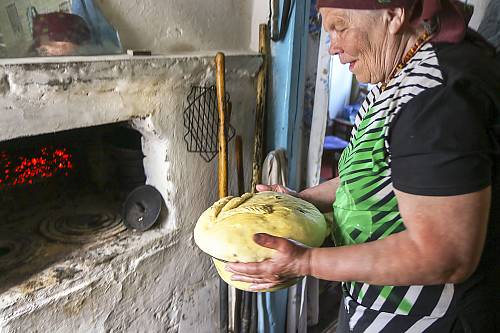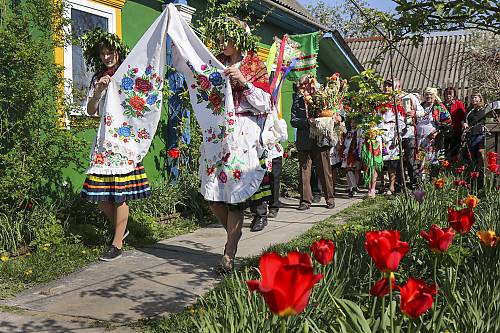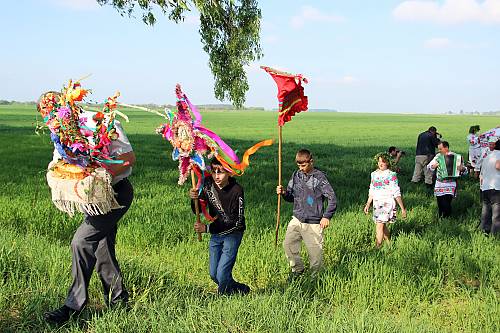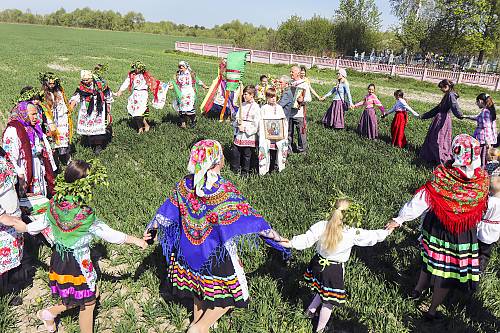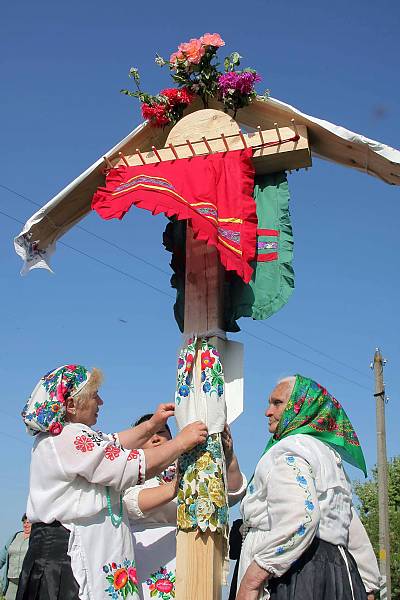Spring rite of Juraŭski Karahod
Inscribed in 2019 (14.COM) on the List of Intangible Cultural Heritage in Need of Urgent Safeguarding

The spring rite of Juraǔski Karahod is performed by residents of the village of Pahost on St. George’s Day. For Belarusians, St. George safeguards livestock and agriculture. In Pahost, the holiday is observed through a specific ceremonial rite that encompasses various ceremonial activities, songs, games, omens and beliefs. Traditionally, the ritual involves two cycles. The first cycle takes place in the courtyard, where the animals are led out of the barn for the first time after winter, with a series of ritual acts to protect the livestock. The second cycle is associated with the agricultural tradition; it begins on the eve of the holiday with baking the ceremonial bread (Karahod) and ‘black’ (sacrificial) bread. The next morning, the villagers go to the field, carrying a ceremonial towel, the bread and an eight-pointed star. Women singing ceremonial songs and men carrying the Karhod form a circle and sing and a piece of the black loaf is buried in the ground while pronouncing the plea to God for a good harvest. Participants then hand out pieces of ritual bread throughout the village and the festivities continue until evening. Despite the community’s concerted efforts to safeguard the element, it is currently threatened by numerous factors such as Pahost’s gradually ageing population, a shortage of jobs in the village, globalization, folklorization of the element, and the general socio-economic situation in the region.
